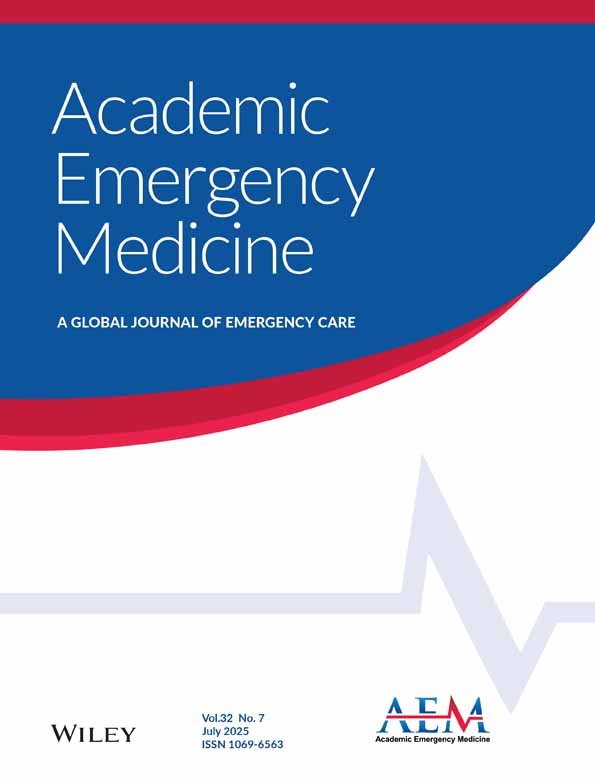An Extended Care Facility-to-Emergency Department Transfer Form Improves Communication
Abstract
Objectives: Previous studies have established that essential information is inconsistently provided during the transfer of extended care facility (ECF) patients to the emergency department (ED). The authors tested the hypothesis that a one-page, standard ECF-to-ED transfer form would change the rate of successful documentation of ECF patient information. Methods: The design was a pre- and postintervention investigation. The setting was the Methodist Hospital ED, an urban teaching facility in Indianapolis, Indiana. The population included consecutive patients transferred from ECFs to the ED. The intervention consisted of the introduction of a one-page, standard ECF-to-ED transfer form that listed 11 data elements that are critical for patient care. The completed form was to be sent with patients transferred to the ED. Successful documentation was defined as the recording of at least nine of 11 data elements. Results: In the preintervention period, the ED received 130 transfers from 41 ECFs. Sixty-five of 130 transfers were from ten ECFs, which were the targets of the intervention. In the postintervention period, 72 consecutive transfers from ten ECFs were studied. Postintervention, the proportion of transfers with successful documentation was 77.8% (56 of 72), an increase of 19.3% (95% CI = 4.0% to 34.7%) over the preintervention period. In 31.9% (23 of 72) of postintervention ED transfers, the transfer form was transported with the patient. Successful documentation was achieved in 22 (95.6%) of these 23 transfers. Conclusions: Use of a one-page, standard ECF-to-ED transfer form increased the amount of essential data provided to the ED.




